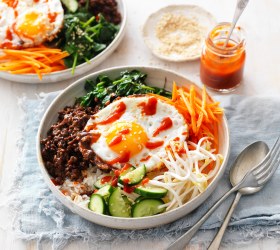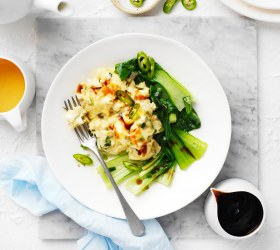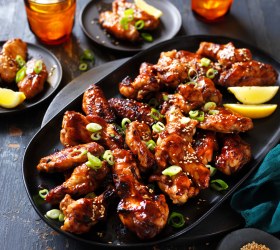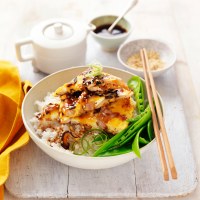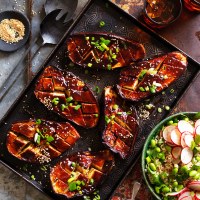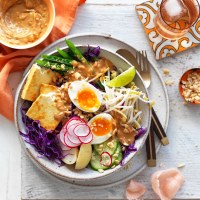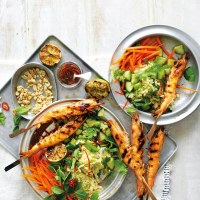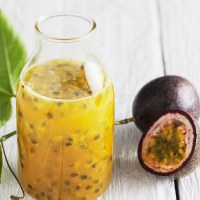9 types of Asian sauces
When you walk down the Asian aisle of your local supermarket or visit an Asian grocer, it's easy to get overwhelmed by all the different types of Asian sauces and condiments if you're not familiar with them. This guide breaks down the basic differences between some of the most commonly used East Asian sauces and how to use them.
Light soy sauce
Also called ‘superior’ or ‘thin’ soy sauce, light soy is a Chinese soy sauce. The translated Chinese name means “fresh” soy, because it’s traditionally made from the first press of fermented soybeans. Light soy sauce is lighter in colour and has a thinner consistency than other soy sauces.
This is the most commonly used soy in Chinese cooking. Its very salty flavour makes it an essential ingredient for seasoning. When a recipe simply calls for ‘soy sauce’, reach for the light soy. In Australia, light soy is readily available in the Asian section of most supermarkets. It is also available in delis and Asian grocers.
Soy sauce doesn’t need to be refrigerated, store it in your pantry out of direct sunlight. The shelf life is up to 2-3 years.
Dark soy sauce
Also called ‘black’ soy, dark soy has more sodium than light soy. This is tempered by adding caramel to it, which makes dark soy darker, sweeter and thicker. It's used for flavour and seasoning, but more importantly, it’s used to add colour to many dishes. Classic dishes like fried rice, noodle dishes, braises and red cooked dishes have dark soy added to give them a deep, rich colour and glossiness.
If you don't have dark soy sauce, you can substitute a mixture of light soy sauce, molasses and water. At a pinch, dark soy can also be thinned down with water and used instead of light soy, but be careful how much you add, as it can make your food slightly bitter.
Store dark soy the same way you store light soy.
Japanese soy sauce
Also known as shoyu. This Japanese variety of soy sauce is made from a combination of wheat and soybeans, whereas Chinese soy sauce is only made with soybeans. It is fermented with water and salt and has a full-bodied umami flavour. However, it is overall milder than Chinese soy sauce.
Similar to Chinese soy, shoyu can be purchased as light (usukuchi) or dark (koikuchi). Usukuchi is the light shoyu and it has a thinner consistency, saltier flavour and is more intense. After fermentation, mirin (a sweet rice wine) is added, giving it sweetness. Koikuchi is the dark shoyu, popular because of its rich and intense flavour. It is used in marinades, sauces, dips, stir-fries and more.
Mushroom soy
A dark soy sauce that has been infused with the essence of straw or shiitake mushrooms. It is often used instead of dark soy. Mushroom soy imparts a rich and earthy mushroom flavour to food.
Tamari
A thicker Japanese-style soy sauce made from soy beans and rice. Most versions are wheat-free, and therefore gluten-free. It is less salty than other soy sauces, and therefore used as a dipping sauce for dishes such as sushi.
Kecap manis
Originating from Indonesia, kecap manis is a thick and rich soy sauce. Its classic sweet flavour is the result of adding palm sugar, giving it a sticky, treacly texture. Best known for its use in classic Indonesian dishes of nasi goreng and mee goreng. It’s a great addition to braises, stir fries and marinades.
Oyster sauce
As the name suggests, oyster sauce is made from the extract of fermented oysters mixed with soy sauce. It has a rich and savoury flavour with a caramel note. It has a thicker texture similar to tomato sauce. This dark brown umami-rich sauce is great in braises, stir-fries, marinades and as a dressing for steamed vegetables. Once opened, store in the fridge.
Fish sauce
A South-East Asian seasoning. It is often used in the same way soy sauce is used by Chinese and Japanese cooks. Fish sauce is made from anchovies, salt, and water, and is intensely flavoured. Anchovies and salt are arranged in wooden barrels to ferment and are slowly pressed, to release the salty liquid. It has a very pungent scent, and it is essential for seasoning and enhancing flavours in many cuisines including Thai, Vietnamese and Indonesian.
Hoisin sauce
A popular Chinese sauce made from fermented soy bean paste, garlic, vinegar, chilli and spices. Hoisin sauce has a balance of sweet and salty flavour. It is thicker and stickier than tomato sauce but can be watered down to different consistencies.
Used primarily in Chinese cuisine as a glaze for meat, in stir fries or as a dipping sauce.
Asian-inspired recipes
Check out some recipes below using these delicious sauces.
GET THE RECIPE: Sticky Asian Pork Belly with Plums by Summer Stonefruit
This gorgeous, sticky and aromatic soy-based sauce goes perfectly with the sweet plums and succulent pork belly.
GET THE RECIPE: Nasi Goreng Tray Bake by Australian Eggs
This super flavourful rice dish gets its rich flavour from a combination of kecap manis, soy sauce, sweet chilli and stock.
GET THE RECIPE: Teriyaki Beef Noodles by Passage to Asia
Teriyaki sauce is traditionally made from a combination of soy sauce, sugar and spices. If you want to avoid added sugars, this teriyaki sauce is a good choice.



